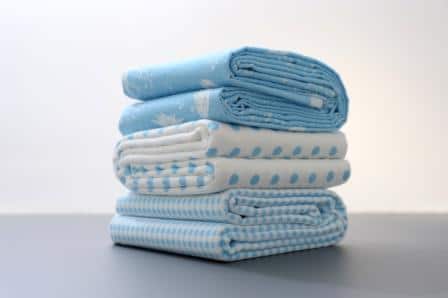Want a warm and soft fabric for your winter? The flannel fabric is a soft, medium-weight cotton fabric with a nap, or uncertain, finish on one or both sides. Its snoozed finish either derives from brushing or from its typical loosely spun weave. Cotton flannel suppliers USA flannel will make you feel soft, cozy and keep you warm and relaxed all winter long. It’s often woven with designs, especially checked and tartan, and is a preferred fabric for pieces during the winter. Here are some of the types of flannel and the history of flannel.
Flannel in history
It’s thought that the word “flannel” arose in Wales, but we see for detail that the term was in everyday practice in France in the form “flannelle” as initial as the 17th century. While flannel was occasionally common among the French and other European peoples through the Illumination era, interest has waned away while Welsh flannel use has only improved.
When should I wear flannel?
These types of fabrics are best for winters as it is warm and soft to the touch. It’s naturally a cold-weather fabric flawless for keeping you shoved up. Also, they can give you an American look if you wear it with a long-sleeve flannel button-down shirt over a pair of jeans. Ladies’ dresses can also be composed of flannel, and you can also dress flannel tops pushed into high-waisted pants or skirts. Different types of flannel are for further use. So, let’s look below the flannel types.
Types of flannel
cotton flannel suppliers USA offers different kinds of flannels. Here is the sub-division of these flannel fabrics.
- Wool flannel
Most European flannels are woven like Welsh flannel was traditionally composed of wool. Until recent centuries, in Europe, flannel was not that much popular until the Indians started using them.
- Cotton flannel
Cotton flannel became more widespread during the Colonial colonizing period, and this substance is still highly wanted after for soft, rich flannel clothes or bedsheets with sleeping on both sides.
- Synthetic or mixed flannel
Today, many categories of flannel in the shop are composed of artificial materials like polyester or nylon as a substitute for natural fibers. Fake textiles are more combustible, and they are firmer on the environment.
- Ceylon flannel
Initially developed in Ceylon (now Sri Lanka), this flannel contains a blend of 50/50 cotton and wool.
- Baby flannel
This flannel is slept on both sides and valued for its fineness. It can be composed of any material benefit to make flannel, but wool and cotton deliver the softest textures against subtle baby skin.
- Diaper flannel
While many mothers wouldn’t think of their yarn, recyclable baby diapers as composed of the same fabric as their season bedsheets, the textile used to make these not reusable diaper substitutes is precisely a flannel type. This fabric is dozed on both sides to aid porosity and comfort.
- Vegetable flannel
Temporarily, a type of flannel composed of cellulose became common in Europe during the 19th century. Vegetable flannel went kindness after petrochemical-based fabrics became obtainable in the 20th century.

